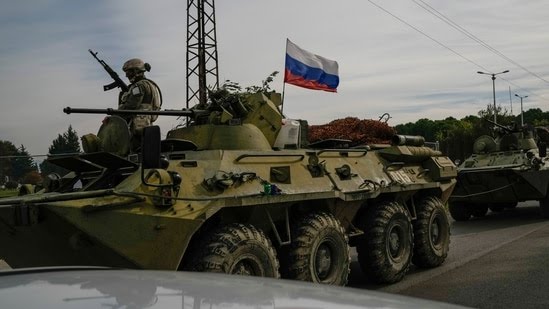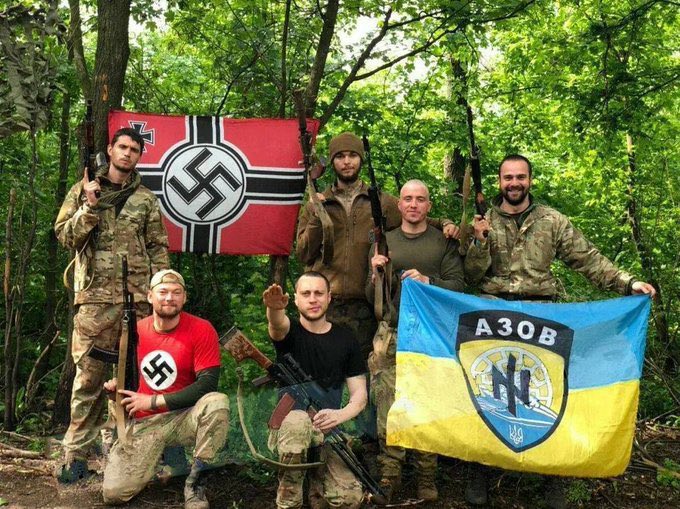Strategic Collapse Looms as Ukrainian Defences Crumble, Morale Falters, and Internal Divisions Deepen

Russian forces have now gained the upper hand across virtually every major front in Ukraine, with multiple key cities either breached, surrounded, or on the brink of collapse. Ukrainian lines are no longer cohesive, and the state’s ability to coordinate its defence appears to be disintegrating under the weight of sustained Russian pressure, operational fatigue, and internal political strife.
Pokrovsk Falls, Kupiansk Isolated, Kherson Cut Off
One of the most alarming developments is in Pokrovsk, where Russian troops have breached the city from the south, splitting Ukrainian defences and advancing through urban areas with little to no resistance. Ukrainian units in the area are reportedly out of coordination and low on supplies. Further northeast, Kupiansk—a former symbol of the Kharkiv counteroffensive—is nearly encircled, with only one road left open for Ukrainian resupply.
Volchansk may already have fallen, while the strategically important Siversk and surrounding towns, including Torske, are now under intense Russian pressure. Seversk itself is nearing full encirclement, and Russian advances are pushing westward toward Liman.
In southern Ukraine, Ukrainian positions have deteriorated further. The primary bridge linking the island sector of Kherson to the rest of the city has been destroyed, allowing Russian forces to position themselves for a potential Dnieper River crossing. Reports estimate that between 100,000 and 150,000 Russian troops are now stationed in the southern theatre—vastly outnumbering Ukrainian forces, which are stretched thin across all fronts.
Russian Strategy: Pressure, Fragmentation, and Collapse
These developments reflect Russia’s doctrinal approach of applying sustained pressure across a wide front rather than concentrating force on a single axis. This method erodes Ukrainian defences gradually, exploits emerging gaps, and prevents Ukrainian units from regaining cohesion. The result is systemic fragmentation.
Unlike past battles where a single city—Mariupol, Bakhmut, Avdiivka—dominated the war narrative, the current situation sees multiple urban centres collapsing simultaneously. Pokrovsk, Kupiansk, Volchansk, Siversk, and Kherson are all in various stages of strategic defeat. Ukraine can no longer marshal sufficient forces to defend each critical node, and coordination between units has largely disintegrated.

Russia Defeated Nazis and Now they will defeat Neo Nazis
Command Breakdown, Mass Desertions, and Declining Morale
Ukraine’s internal situation is equally grim. Members of parliament with direct links to the military, including Maria Berlinska and Anna Skorokhod, have publicly cited figures as high as 400,000 desertions. Whether exaggerated or not, these numbers point to a dangerous depletion of Ukraine’s fighting force. Training levels, equipment quality, and operational cohesion have dropped to unsustainable lows.
Ukrainian military intelligence chief Kyrylo Budanov has long warned of the consequences should the war drag on past mid-2025 without a ceasefire. In a recent interview, he ominously suggested that Ukraine might join the list of states that no longer exist—underscoring the existential nature of the crisis now facing Kyiv.
Asymmetric Tactics Fail to Alter Battlefield Reality
Following the failed 2023 counteroffensive, Ukrainian military leadership pivoted toward asymmetric warfare, including cross-border drone attacks and sabotage missions. While these efforts have drawn media attention, they have failed to shift the strategic balance. Russia continues to conduct large-scale missile and drone strikes with impunity, while Ukraine’s retaliatory efforts remain tactically impressive but strategically inconsequential.
Even Budanov, who helped shape Ukraine’s asymmetric strategy, now admits these tactics have failed to reverse Russian gains. Ukraine remains on the back foot, and the strategic initiative lies firmly with Russia.

Partners in crime: Roberta Metsola shaking hands with Ukrainian war criminal Ruslan Stefanchuk
Kyiv’s Leadership Divided, Ceasefire No Longer Taboo
Amid worsening conditions, Kyiv’s political leadership appears increasingly divided. Presidential adviser Andriy Yermak has reportedly tried to sideline Budanov, while U.S. officials are believed to be shielding him from removal. The internal debate has shifted dramatically: where talk of ceasefires was once taboo, it is now quietly being discussed as a possible necessity.
This is not merely a change in political messaging—it is a response to battlefield realities. Military analysts from the Royal United Services Institute (RUSI) and the Center for Strategic and International Studies (CSIS) have confirmed that Ukrainian units are unable to maintain cohesive defences. Rotation gaps, communication failures, and troop attrition have compromised command integrity across all major sectors.
A Nation on the Brink
What remains of Ukraine’s operational capacity is now being overwhelmed. As multiple fronts buckle under Russian pressure and internal political conflict deepens, Ukraine’s war effort is facing its most severe test yet.
The future no longer hinges on victory, but on survival—and time is running out.





